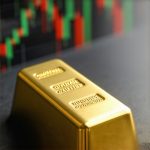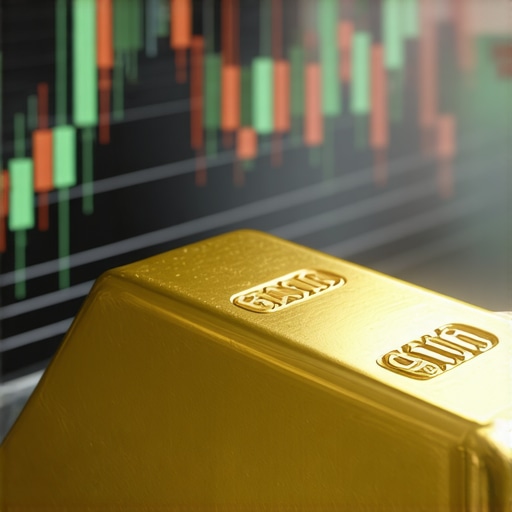The Fundamentals of Gold Prices: Supply and Demand Dynamics
Gold has long been revered not only as a symbol of wealth but also as a safe haven for investors. Its value is influenced by a variety of factors, but none are quite as critical as the forces of supply and demand. Understanding how these forces operate can provide clearer insights into the fluctuations of gold prices.
At its core, the price of gold is determined by what buyers are willing to pay and what sellers are willing to accept. When demand rises, prices typically increase. Conversely, if the supply of gold exceeds demand, prices tend to fall. This relationship is foundational in the study of precious metals and is influenced by several global factors.
Global Economic Conditions and Their Impact
The global economy plays a significant role in determining the demand for gold. During periods of economic uncertainty—such as recessions or geopolitical tensions—investors often flock to gold as a safe investment. This surge in demand can drive prices higher. For instance, during economic downturns, gold is perceived as a hedge against inflation and currency devaluation, making it a sought-after asset.
Moreover, central banks around the world hold significant amounts of gold in their reserves. These institutions can affect gold prices by buying or selling gold in large quantities. For example, if a major central bank decides to increase its gold reserves, it can create upward pressure on prices due to increased demand. Conversely, if banks sell off their gold reserves, it can lead to a decrease in prices.
Mining Production and Supply Factors
On the supply side, gold mining production is a crucial factor. The amount of gold mined annually affects the market supply. If mining operations are disrupted due to political instability, natural disasters, or regulatory changes, the supply can dwindle, leading to higher prices. For example, if a significant mining country faces strikes or political turmoil, it can hinder production and tighten supply, thereby increasing prices on the global market.
Additionally, recycling of gold from old jewelry and electronic devices contributes to supply. When gold prices rise, more individuals and businesses may choose to sell their old jewelry, leading to an increase in the recycled supply of gold. This dynamic plays a vital role in maintaining balance in the market.
Technological Advances and Market Trends
Technological advancements also impact both supply and demand. Innovations in mining technology can enhance production efficiency, potentially increasing supply. Conversely, advancements in financial technology facilitate investment opportunities in gold through various products like ETFs and gold mutual funds, thereby increasing demand. Understanding these trends is essential for investors looking to navigate the gold market more effectively.
In conclusion, the relationship between gold prices and global supply and demand is intricate and influenced by various factors including economic conditions, central bank policies, mining production, and technological changes. Investors who grasp these dynamics can make more informed decisions, whether they’re looking to buy gold for personal investment or to enhance their portfolios. For those interested in maximizing their investment strategies, exploring effective gold investment strategies can provide valuable insights into market behavior and future trends.
The Role of Central Banks in Gold Price Dynamics
Central banks play a pivotal role in shaping gold prices globally. Their decisions regarding gold reserves can significantly influence market trends. For example, when central banks increase their gold holdings, it often signals confidence in gold as a safe asset, leading to a rise in prices. Investors should monitor central bank activities closely, as shifts in policy can provide critical insights into future price movements. Understanding how central bank purchases affect gold price trends can enhance investors’ strategic approaches.
Interest Rates and Gold Investment Strategies
Interest rates are another crucial factor affecting gold prices. Typically, when interest rates are low, gold becomes more attractive to investors seeking safety, as the opportunity cost of holding gold—compared to interest-bearing assets—decreases. Conversely, rising interest rates can dampen gold demand, leading to lower prices. For those looking to maximize their returns, understanding the interplay between interest rates and gold investments is essential. Explore effective gold investment strategies to navigate these fluctuations.
The Impact of Inflation on Gold Prices
Inflation often drives investors toward gold as a hedge against currency devaluation. When inflation rates rise, the purchasing power of currency decreases, making tangible assets like gold more appealing. This relationship highlights the importance of keeping an eye on economic indicators related to inflation, as they can signal potential increases in gold prices. Investors seeking to protect their wealth from inflation should consider incorporating gold into their portfolios as a strategic move.
Market Sentiment and Speculation
Market sentiment also plays a significant role in influencing gold prices. Investor psychology can often drive demand, leading to price fluctuations based on perceived risk or stability in the economy. Speculative trading can create volatility in the gold market, as traders respond to news events or economic data. Understanding these dynamics can help investors make informed decisions about when to buy or sell gold. Staying attuned to market sentiment and trends is crucial for those serious about investing in gold.
Gold Demand Trends: Jewelry vs. Investment
Gold demand can be categorized into various sectors, with jewelry and investment being the two primary segments. In countries like India and China, the demand for gold jewelry remains strong, particularly during festive seasons. This cultural significance often drives price increases during certain times of the year. Conversely, investment demand, which includes purchases of gold ETFs and bullion, can fluctuate based on economic conditions. Investors interested in understanding gold demand trends should keep abreast of seasonal variations and cultural influences that affect the market.
Emerging Markets and Gold Consumption
Emerging markets are becoming increasingly important in the global gold landscape. Countries with growing middle classes, such as India and China, are seeing rising gold consumption. This trend can positively impact gold prices, as increased demand from these regions can tighten supply and drive up costs. Investors should consider the implications of growth in emerging markets on their gold investment strategies, as these trends can offer unique opportunities for profit.
In summary, understanding the complexities of gold prices requires a comprehensive analysis of various factors, including central bank actions, interest rates, inflation, market sentiment, and demand trends. By staying informed and strategically navigating these dynamics, investors can better position themselves to capitalize on the potential of gold investments. For further insights, consider exploring gold price forecasts to stay ahead of market changes and optimize your investment strategies.
Analyzing Gold Demand Trends: Jewelry vs. Investment
The gold market is influenced heavily by demand trends, which can be divided into two main categories: jewelry and investment. In regions such as India and China, gold jewelry holds cultural significance, especially during festivals and weddings, driving seasonal spikes in demand. Conversely, investment demand encompasses purchases of gold bullion, coins, and ETFs, which are affected by macroeconomic trends and investor sentiment. For those looking to delve deeper into these dynamics, understanding gold demand trends can provide valuable insights into potential price movements.
Seasonal Influences on Gold Jewelry Demand
Seasonality plays a crucial role in gold jewelry demand. Festive seasons, such as Diwali in India, see a surge in gold purchases as families seek to gift and adorn themselves with gold ornaments. This cultural aspect often results in price increases leading up to these periods. Investors should watch for these seasonal fluctuations, as they can create opportunities for strategic buying or selling. To learn more about the implications of this demand, check out key benefits of investing in gold ETFs.
The Role of Gold in Emerging Markets
Emerging markets are becoming increasingly significant players in the global gold landscape. Countries like India and China, with their expanding middle classes and rising disposable incomes, are experiencing increased gold consumption. This growing demand can lead to tighter supply and upward pressure on prices. As such, investors should consider how these trends may impact their gold investment strategies. For further insights, explore gold price forecasts to anticipate market shifts driven by emerging market demands.
Geopolitical Events and Gold Prices
Geopolitical events can significantly influence gold prices as well. During times of uncertainty, such as political instability or military conflicts, investors often flock to gold as a safe haven asset. The demand during such crises can drive prices higher, making it essential for investors to stay informed about global events that may affect market stability. In this context, understanding how central bank purchases affect gold price trends can provide a comprehensive view of market dynamics.
Investment Strategies for Gold: Balancing Risk and Reward
For investors looking to enter the gold market, it is critical to develop a well-rounded investment strategy that balances risk and reward. Diversifying within the gold sector, such as including both physical gold and gold ETFs, can help mitigate potential losses while capitalizing on market gains. Additionally, keeping abreast of market analysis and trends can enhance decision-making processes. To refine your investment approach, consider reviewing effective gold investment strategies that suit your financial goals.
Understanding the Impact of Currency Fluctuations
Currency fluctuations play a significant role in gold pricing. As gold is typically priced in U.S. dollars, any changes in the dollar’s strength can affect gold prices globally. A weaker dollar generally makes gold cheaper for investors using other currencies, potentially increasing demand. Thus, analyzing currency trends alongside gold market fluctuations can provide deeper insights for investors. For a broader perspective, look into how gold prices correlate to global events to understand the interconnectedness of these markets.
Identifying the Best Gold Investment Opportunities
Investing in gold can be a lucrative endeavor, but identifying the best opportunities requires careful consideration of market conditions and asset types. Investors can choose from various gold investment vehicles such as physical gold, gold ETFs, and gold mining stocks. Each option has its own risk profile and return potential, making it essential to understand the nuances of each. For example, investing in gold mining stocks can offer significant upside potential, especially if the mining company has strong management and cost controls in place.
The Benefits of Diversification in Gold Investments
Diversification is a critical strategy in gold investing. By spreading investments across different gold assets, such as coins, bars, and ETFs, investors can mitigate risk while enhancing their overall portfolio performance. This approach allows investors to capitalize on various market movements and reduces the impact of any single asset’s poor performance. To understand how to diversify effectively, exploring gold trading techniques can provide valuable insights.
Understanding the Role of Gold in Economic Downturns
Gold has historically been viewed as a safe haven during economic downturns. Investors flock to gold when stock markets are volatile, as its value often remains stable or even increases in uncertain times. This characteristic positions gold as a hedge against inflation and economic instability. To gain a deeper understanding of gold’s role in economic contexts, consider the benefits of gold as a hedge against inflation.
Monitoring Global Economic Indicators
To make informed investment decisions, it’s crucial to monitor global economic indicators that influence gold prices. Factors such as interest rates, inflation rates, and geopolitical events can significantly impact gold’s value. For instance, when central banks lower interest rates, gold often becomes more attractive as a non-yielding asset. Keeping an eye on these indicators can help investors time their gold investments effectively. For more insights, review gold price forecasts to understand potential market shifts.
Leveraging Technology in Gold Trading
Modern technology has revolutionized gold trading, providing investors with tools to analyze market trends and execute trades swiftly. Online trading platforms and apps have made it easier for both novice and experienced investors to manage their gold investments efficiently. Utilizing these technologies can enhance trading strategies and improve overall investment performance. To better navigate the digital gold trading landscape, consider learning the basics of gold trading techniques.
Exploring Gold Investment Strategies
As investors look to diversify their portfolios, gold remains a popular choice due to its historical stability and potential for long-term growth. Understanding various gold investment strategies can empower investors to make informed decisions that align with their financial goals.
Physical Gold vs. Gold Securities
Investors often grapple with the choice between physical gold and gold securities. Physical gold includes tangible assets like bars and coins, which provide a sense of ownership and security. Conversely, gold securities, such as ETFs and mining stocks, offer liquidity and convenience. Each option has its benefits and drawbacks, making it essential for investors to assess their individual preferences and circumstances.
Long-Term vs. Short-Term Gold Investment
Deciding between long-term and short-term investment strategies is crucial in gold investing. Long-term investors typically focus on the historical appreciation of gold over decades, viewing it as a hedge against economic instability. In contrast, short-term investors may capitalize on market fluctuations to achieve quick gains. Understanding market trends and employing technical analysis can be beneficial for those opting for short-term strategies.
The Importance of Research in Gold Investment
Effective research is a cornerstone of successful gold investment. Investors should familiarize themselves with market dynamics, historical price trends, and economic indicators that influence gold prices. Additionally, analyzing the performance of gold mining companies can provide insights into potential investment opportunities. For deeper research techniques, consider exploring how to research gold investments.
Utilizing Market Analysis Tools
Market analysis tools can enhance an investor’s ability to make informed decisions. These tools can provide real-time data, predictive analytics, and market sentiment analysis. By leveraging technology, investors can better understand market movements and identify optimal entry and exit points for their gold investments. Familiarizing oneself with these tools is essential for maximizing investment potential.
Comprehensive FAQ Section on Gold Investment
What is the best way to invest in gold?
The best way to invest in gold varies based on individual preferences. Options include physical gold, gold ETFs, gold mutual funds, and gold mining stocks. Each has its advantages, so it’s essential to consider factors like liquidity, risk tolerance, and investment goals.
Is investing in gold a good idea during inflation?
Yes, investing in gold is often considered a hedge against inflation. As the cost of living rises, gold tends to retain its value, making it a popular choice for preserving purchasing power during inflationary periods.
How do gold ETFs work?
Gold ETFs (Exchange-Traded Funds) are investment funds that track the price of gold. They allow investors to buy shares that represent ownership in the underlying gold assets, providing exposure to gold prices without the need to hold physical gold.
What factors influence gold prices?
Gold prices are influenced by several factors, including economic indicators, interest rates, geopolitical tensions, and currency fluctuations. Monitoring these factors can help investors anticipate price movements.
How much of my portfolio should be invested in gold?
Investment experts often recommend allocating 5-10% of a diversified portfolio to gold. However, this allocation may vary based on individual risk tolerance and investment objectives.
Can I invest in gold without buying physical gold?
Yes, investors can gain exposure to gold through various financial instruments, such as gold ETFs, gold mutual funds, and gold mining stocks, without needing to purchase physical gold.
What are the risks of investing in gold?
While gold is often seen as a safe investment, it does carry risks. These include price volatility, market fluctuations, and the potential for loss in value if market conditions shift. It’s crucial for investors to conduct thorough research and assess their risk tolerance.
How can I sell my gold investments?
Selling gold investments depends on the type of asset. For physical gold, investors can sell to dealers or through auctions. For gold ETFs or mining stocks, investors can sell shares through their brokerage accounts.
What are gold mining stocks?
Gold mining stocks represent shares in companies that mine for gold. Investing in these stocks can provide exposure to gold’s price movements while also offering potential for dividends and company growth.
Authority Resources for Gold Investment
For those seeking further information on gold investment, consider exploring the following trusted resources:
- World Gold Council – Provides extensive research and insights on gold market trends.
- Investopedia – Offers educational content on investment strategies, including gold.
- Kitco News – A leading source for precious metals news and market analysis.
- Bloomberg – Features financial news and market data, including gold prices.
- Morningstar – Provides investment research and analysis on gold ETFs and mutual funds.
Conclusion
Investing in gold can be a rewarding strategy that enhances portfolio diversification and protects against economic uncertainties. By understanding the various gold investment opportunities, strategies, and market dynamics, investors can make informed decisions that align with their financial objectives. Whether opting for physical gold, ETFs, or mining stocks, the key is to conduct thorough research and stay informed about market trends. As you navigate the world of gold investment, remember that every decision should be aligned with your overall investment strategy and risk tolerance.











The article offers a comprehensive view of how gold prices are influenced by the interplay between supply and demand, particularly emphasizing the role of global economic conditions and central bank policies. One aspect that caught my attention is how geopolitical tensions can suddenly shift investor sentiment, driving demand spikes that can outpace supply constraints temporarily. I’ve noticed in recent times that even minor political uncertainties can lead to significant gold price fluctuations, highlighting gold’s status as a true safe haven.
Additionally, the point about recycled gold impacting supply is often overlooked but quite important. In times of rising gold prices, increased recycling acts as a natural supply buffer, somewhat stabilizing the market.
From an investor’s perspective, understanding these nuances is key. I’m curious about how other investors factor in emerging market demand from countries like India and China when predicting gold’s price trajectory? Does anyone incorporate seasonal buying patterns, such as festival-related jewelry purchases, into their investment strategy? It would be great to hear how others integrate these global and cultural variables into their approach to gold investing.
This article provides a really insightful breakdown of the supply and demand fundamentals that drive gold prices. I especially appreciate the focus on how global economic uncertainty tends to boost demand, creating upward pressure on prices. From my experience, watching central bank policies is crucial because their massive gold reserves can shift market sentiment significantly. I recall in 2019, when several countries announced gold purchases, and it noticeably lifted prices temporarily.
Regarding emerging markets like India and China, I think their cultural affinity for gold jewelry during festivals and weddings indeed adds a layer of seasonal demand that can influence short-term price movements. However, I wonder how much of that seasonal demand translates into long-term investment signals? For traders, capitalizing on these cultural trends can be profitable if timed correctly, but for longer-term investors, the core economic factors might matter more.
Has anyone here found successful strategies for balancing these short-term seasonal spikes with examining macroeconomic indicators? Would love to hear how others interpret these diverse influences in their own investment planning.